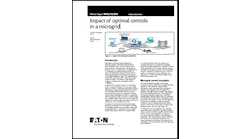By Elisa Wood
January 28, 2010
Not once, but twice President Obama mentioned the importance of energy efficiency in his state of the union address January 27. His support for the resource is no surprise; his administration has channeled $20 billion toward energy savings programs. Obama made clear that going into his second year his support will not waver.
“I know that there are those who disagree with the overwhelming scientific evidence on climate change. But here’s the thing — even if you doubt the evidence, providing incentives for energy-efficiency and clean energy are the right thing to do for our future -– because the nation that leads the clean energy economy will be the nation that leads the global economy. And America must be that nation,” he said.
For many years, efficiency was the poor sister of the energy world. So continued support from the highest office comes as extraordinarily good news to the range of businesses that provide energy savings services and products – from appliance manufacturers to energy efficiency service companies to the new entrants — smart grid and information technology companies.
But when an industry receives this much incentive money, it inevitably comes under increased scrutiny. Is the taxpayer and the ratepayer getting bang for the buck?
Fortunately, a lot of work is underway to bring to buildings the kind of miles per gallon measure we now have in the auto industry. How many people know how well or poorly their homes and businesses use energy?
To find out, innovations are being developed in use of data loggers and other devices that measure actual energy output of equipment and other parameters. Another interesting approach is use of benchmarking and disclosure mandates to determine building performance.
The goal of such programs is give consumers and businesses information about building performance to trigger “market-based competition to own, operate, lease, finance, design and build the most energy-efficient buildings,” says the Institute for Market Transformation.
The Washington, D.C.-based efficiency group describes on its website several cities and states already using benchmarking and disclosure:
- The New York City Council requires building energy rating and disclosure, periodic energy audits and retro-commissioning. It also mandates building-wide lighting upgrades and the installation of submeters and compliance with a new city energy code.
- Washington, D.C. mandates annual energy performance rating and disclosure for commercial buildings. The district publishes building energy performance data on a public online database.
- Utilities in California must provide data for use in ENERGY STAR benchmarking. Commercial building owners must disclose ENERGY STAR benchmark data to prospective tenants, buyers and lenders.
- Austin, Texas requires commercial building energy rating and disclosure, mandatory energy audits for homes and mandatory audits plus retrofits (in some cases) for apartment buildings.
- Washington state has a building energy rating and disclosure mandate similar to California’s. The city of Seattle has its own benchmarking requirement.
- On the federal level, the House and Senate climate bills would create a national building label. In addition, the Department of Energy has a new National Building Rating Program to create a label for homes.
Stay tuned for increased city, state and federal activity in measuring and monitoring energy efficiency as activity expands. More details are available at: http://www.imt.org/
Visit Elisa Wood at http://www.realenergywriters.com/ and pick up her free Energy Efficiency Markets podcast and newsletter.





